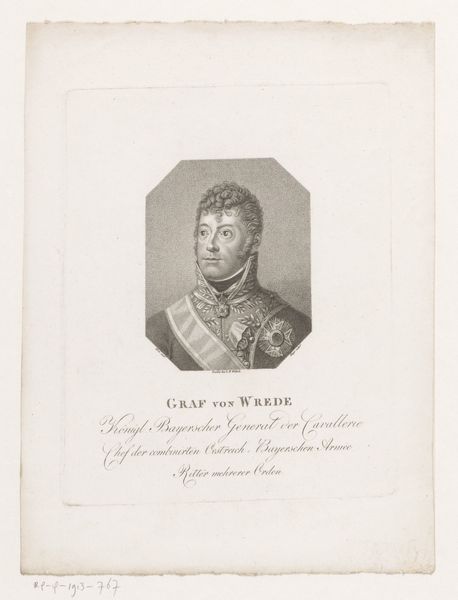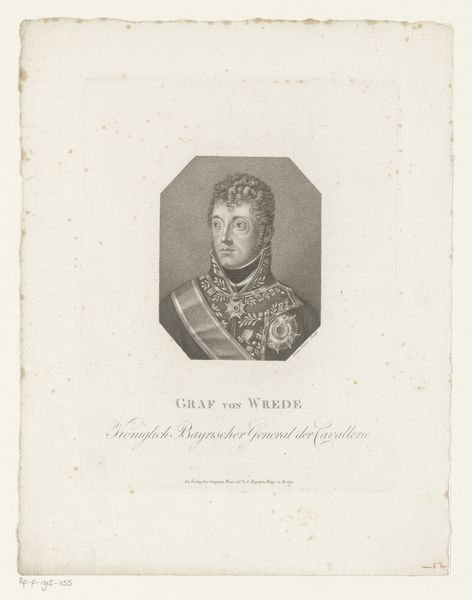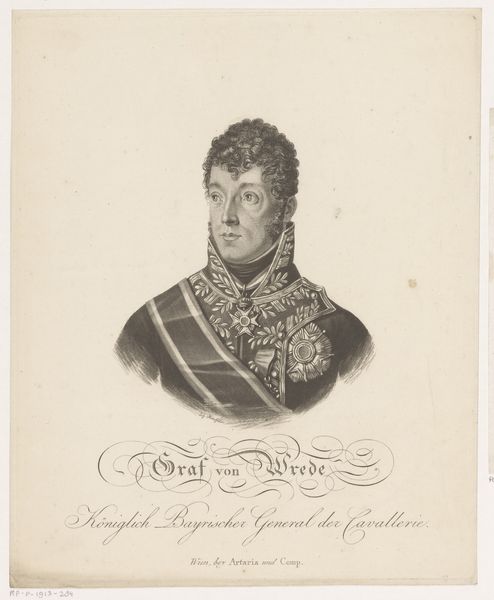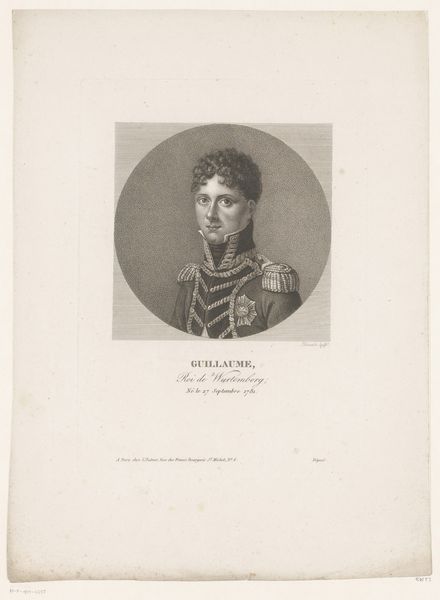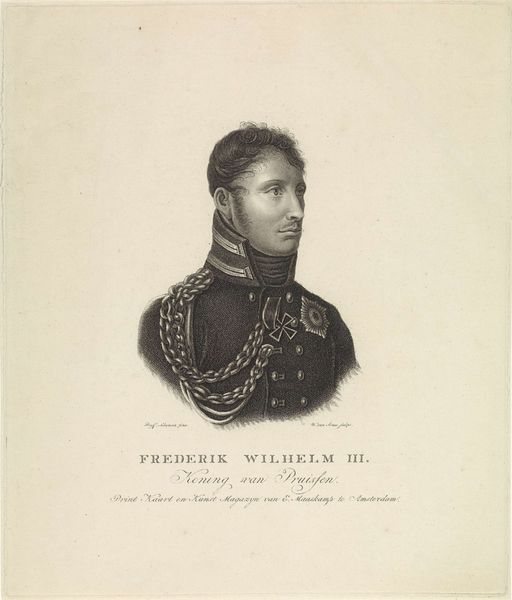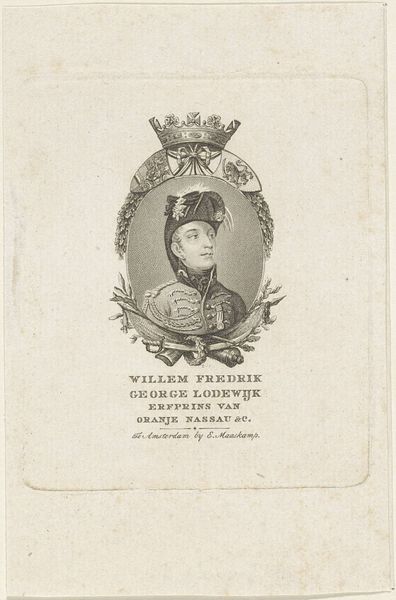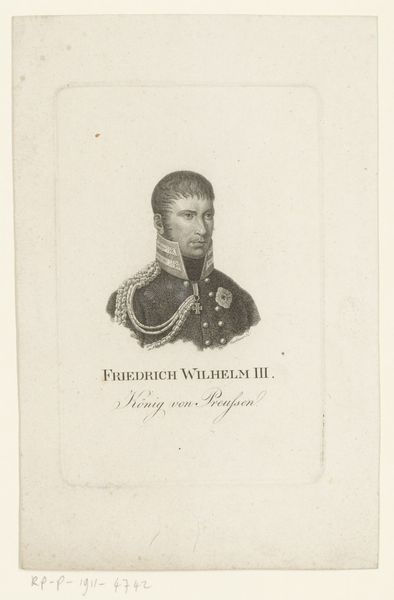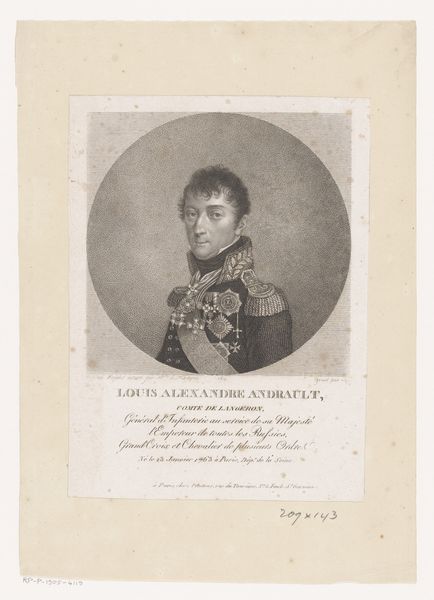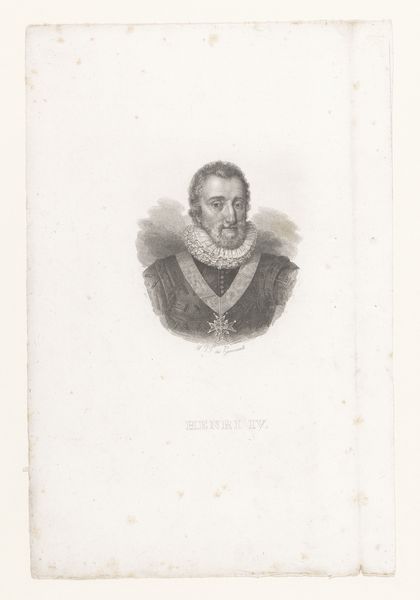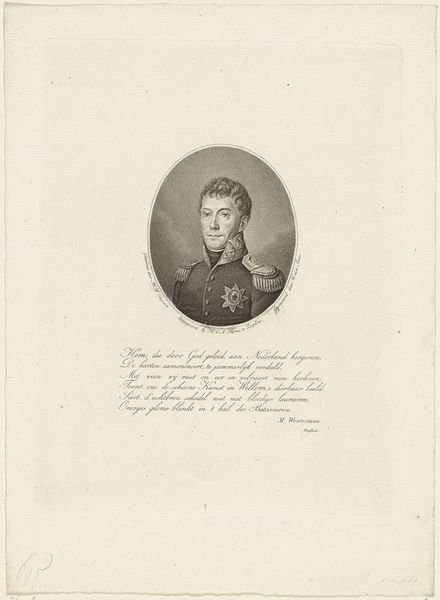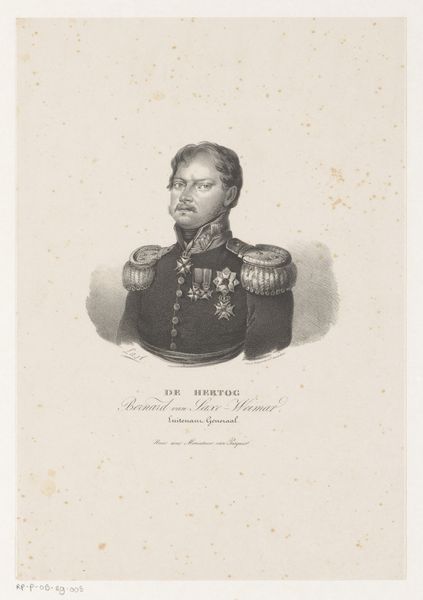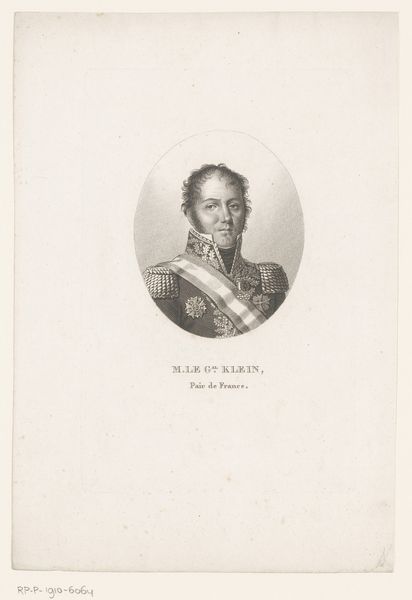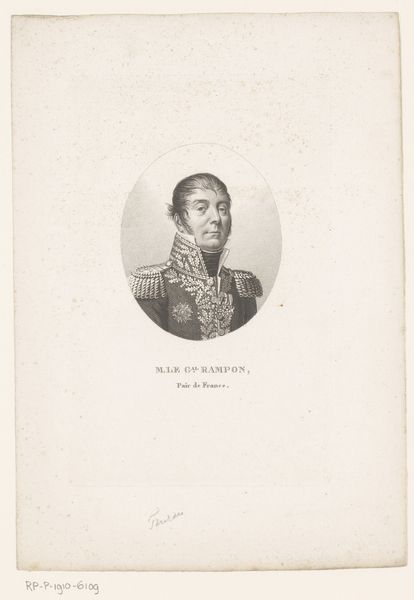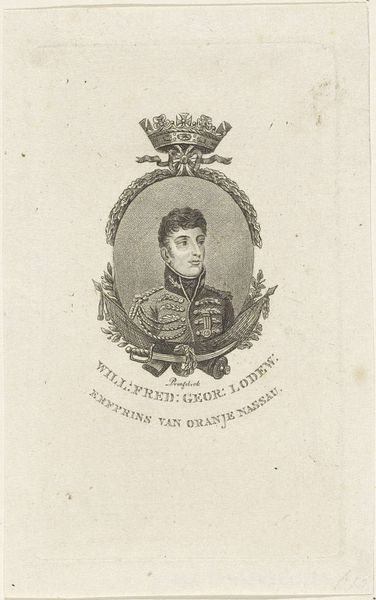
engraving
#
portrait
#
pencil drawn
#
medal
#
neoclacissism
#
old engraving style
#
white palette
#
academic-art
#
engraving
Dimensions: height 270 mm, width 207 mm
Copyright: Rijks Museum: Open Domain
Curator: We're looking at a piece entitled "Portret van Carl Philipp von Wrede," an engraving made sometime between 1777 and 1833 by Meno Haas. Editor: My first impression is that there's an immense amount of authority conveyed despite the somewhat understated nature of the engraving; there is real command in his eyes. Curator: Indeed, the rigid composition directs the viewer’s gaze squarely to his face, underscoring his assured, composed character. The subject's gaze confronts us, but I agree, the tonal qualities are understated. Editor: But is that austerity not telling? This Carl Philipp von Wrede was a prominent figure; understanding the politics of portraiture, we see how calculated his portrayal is to legitimize power through a visual language of control. Even the formal academic style seems to reinforce his authority. Curator: I’d say his power emanates primarily from the meticulous details of his uniform and medals. Each precisely rendered element enhances his imposing presence; notice the light as it picks up each texture and subtle curve. It exemplifies the neoclassical focus on clarity and idealized form. Editor: Though I acknowledge that technical skill, I find it intriguing that such formality was used during a period of social upheaval. The man exudes control and, as the head of the Bavarian cavalry, was integral in enforcing policies—policies which greatly impacted various demographics. Do you not think it necessary to address such a clear-cut portrait within its full historical frame? Curator: Context matters, of course, but to disregard the engraving's careful orchestration of line and tone—how it crafts an idealized image within a clear visual hierarchy—would be a disservice to Haas’ artistry and craft. Editor: An artist's "craft" can certainly contribute to either resisting or reinforcing prevailing ideological narratives. Ultimately, portraits such as these reflect and embed cultural assumptions within historical trajectories of power. Curator: That's certainly food for thought. Viewing the portrait, considering Carl von Wrede's position and the artistry that has idealized him, is perhaps the first and critical step towards a greater historical understanding of his impact.
Comments
No comments
Be the first to comment and join the conversation on the ultimate creative platform.
